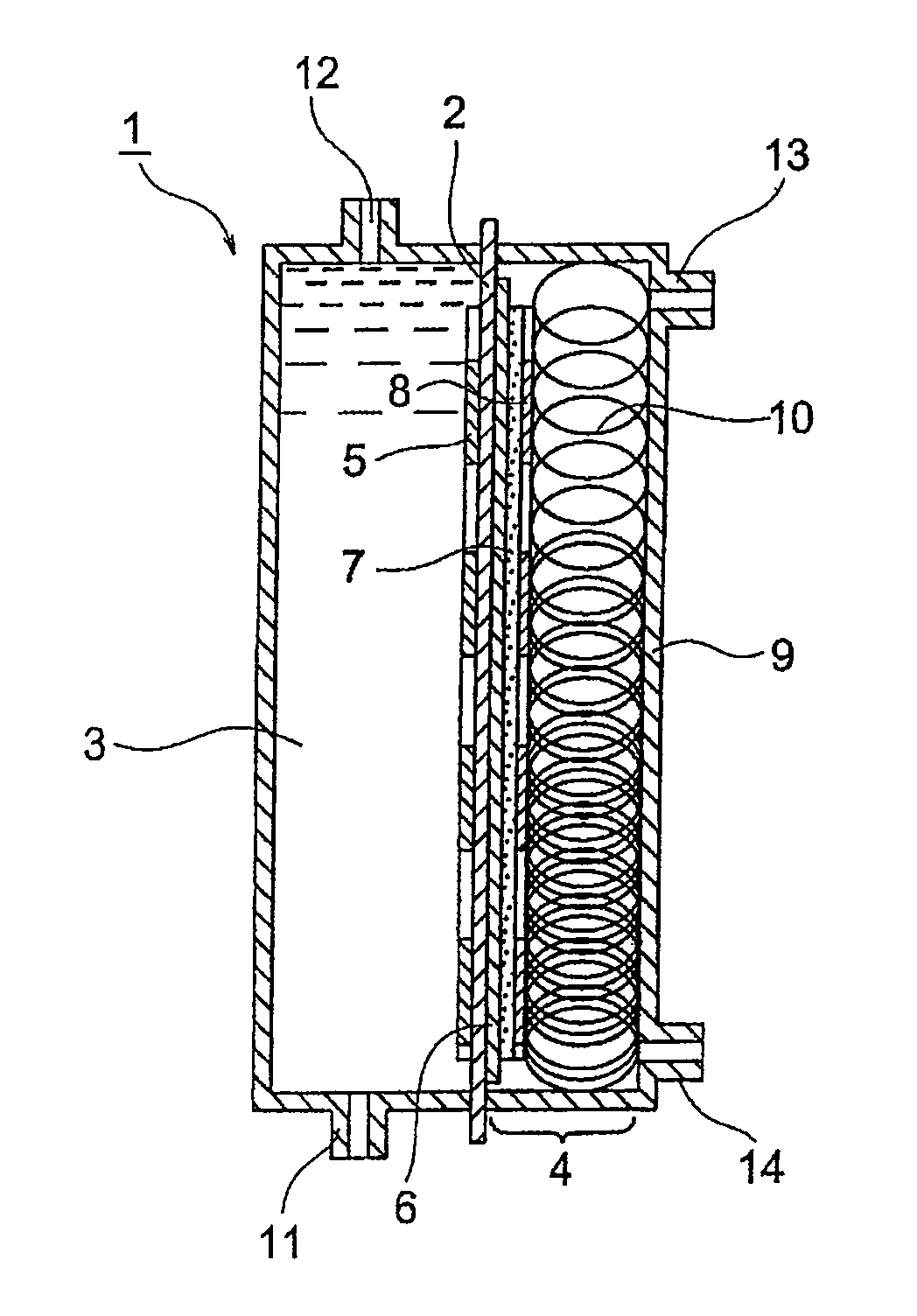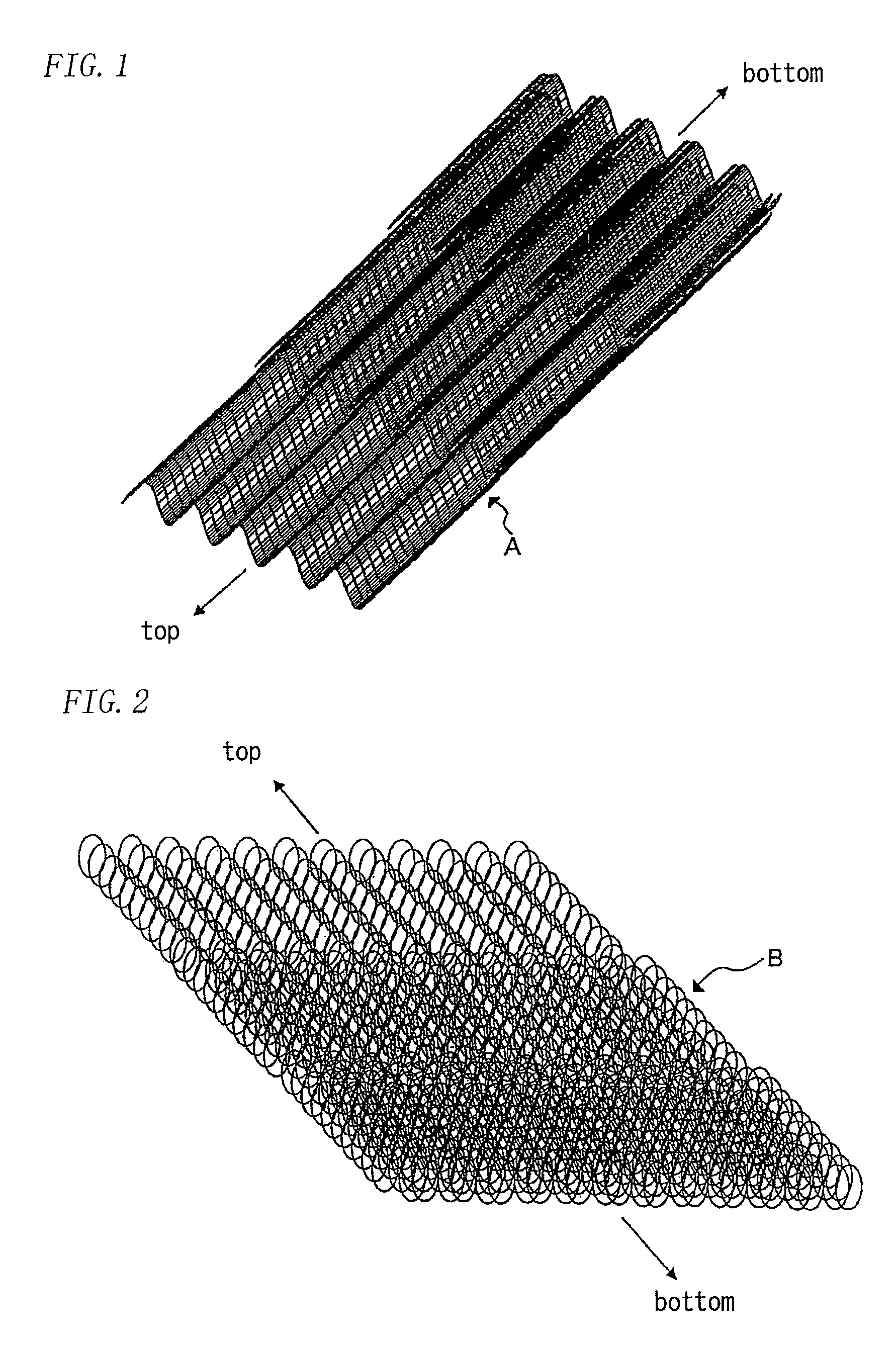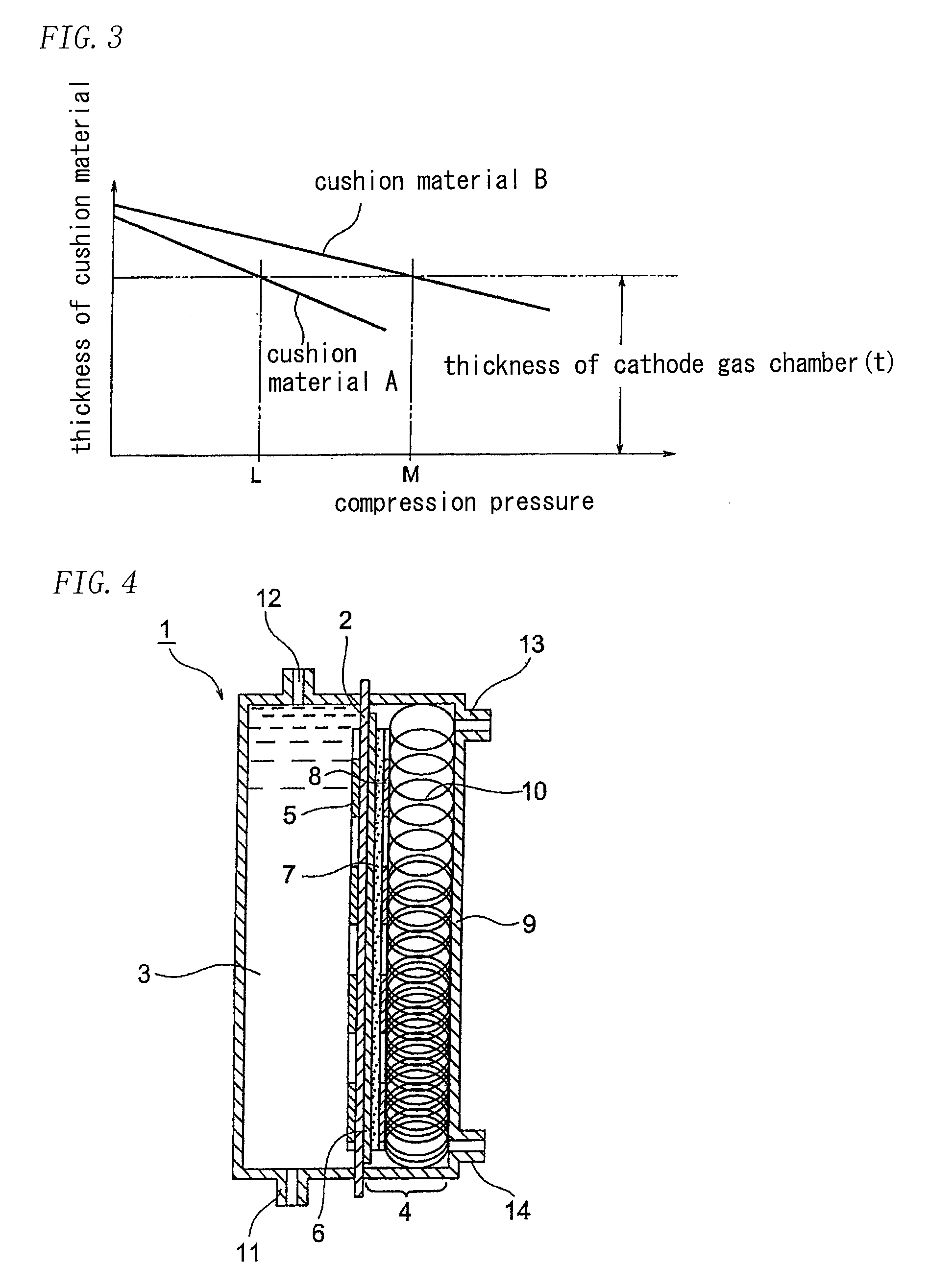Ion exchange membrane electrolytic cell
a technology of electrolysis cell and membrane, which is applied in the direction of electrolysis process, electrolysis components, cells, etc., can solve the problems of increasing voltage and consuming a great deal of energy in the chloroalkali industry, and achieves long-term stable operation, prevents the application of superfluous pressure, and prevents the generation of scratches
- Summary
- Abstract
- Description
- Claims
- Application Information
AI Technical Summary
Benefits of technology
Problems solved by technology
Method used
Image
Examples
example 1
[0056]A two-chamber ion exchange membrane electrolytic cell of which an effective surface area was a width of 100 mm and a height of 1200 mm was assembled as shown in FIG. 4.
[0057]An anode used was a dimensionally stable electrode available from Permelec Electrode, Ltd., and a cathode used was a liquid permeable gas diffusion electrode. The gas diffusion electrode was prepared by impregnating, with silver fine particles and PTFE fine particles, a substrate made of nickel foam electrically plated with silver, followed by hot-pressing. The respective reaction surface sizes were 100 mm in width and 1200 mm in height.
[0058]An ion exchange membrane used was Aciplex F4203 available from Asahi Kasei Chemicals Corporation, and a liquid retention layer used was a carbon cloth having thickness of 0.4 mm available from Zoltek Companies, Inc. which was then hydrophilically treated. A gas diffusion electrode support used was a plain-weaved nickel mesh of 24 mesh which was plated with silver.
[005...
example 2
[0064]A similar test was conducted to Example 1 except that a demister mesh was employed as the cushion material.
[0065]The demister meshes were prepared by knitting nickel wires having wire diameter of 0.25 mm and a pitch of 5 mm in stockinet and processing the meshes to wavy shape having depth of 5 mm and a pitch of 10 mm followed by the electric plating of silver. An amount of the plated silver was 0.5 g / mesh.dm2. When four sheets, five sheets and six sheets of the above meshes were stacked and compressed to 5.5 mm, the repulsive forces of the stacks were 7, 11 and 15 kPa, respectively. The four demister meshes were disposed on the top one-third of the cathode gas chamber, the five demister meshes were disposed on the central one-third of the cathode gas chamber, and the six demister meshes were disposed on the bottom one-third of the cathode gas chamber. The difference between the repulsive force and the liquid pressure at the respective depth direction was 2.6 kPa in minimum and...
PUM
| Property | Measurement | Unit |
|---|---|---|
| pressure | aaaaa | aaaaa |
| pressure | aaaaa | aaaaa |
| pressure | aaaaa | aaaaa |
Abstract
Description
Claims
Application Information
 Login to View More
Login to View More - R&D
- Intellectual Property
- Life Sciences
- Materials
- Tech Scout
- Unparalleled Data Quality
- Higher Quality Content
- 60% Fewer Hallucinations
Browse by: Latest US Patents, China's latest patents, Technical Efficacy Thesaurus, Application Domain, Technology Topic, Popular Technical Reports.
© 2025 PatSnap. All rights reserved.Legal|Privacy policy|Modern Slavery Act Transparency Statement|Sitemap|About US| Contact US: help@patsnap.com



